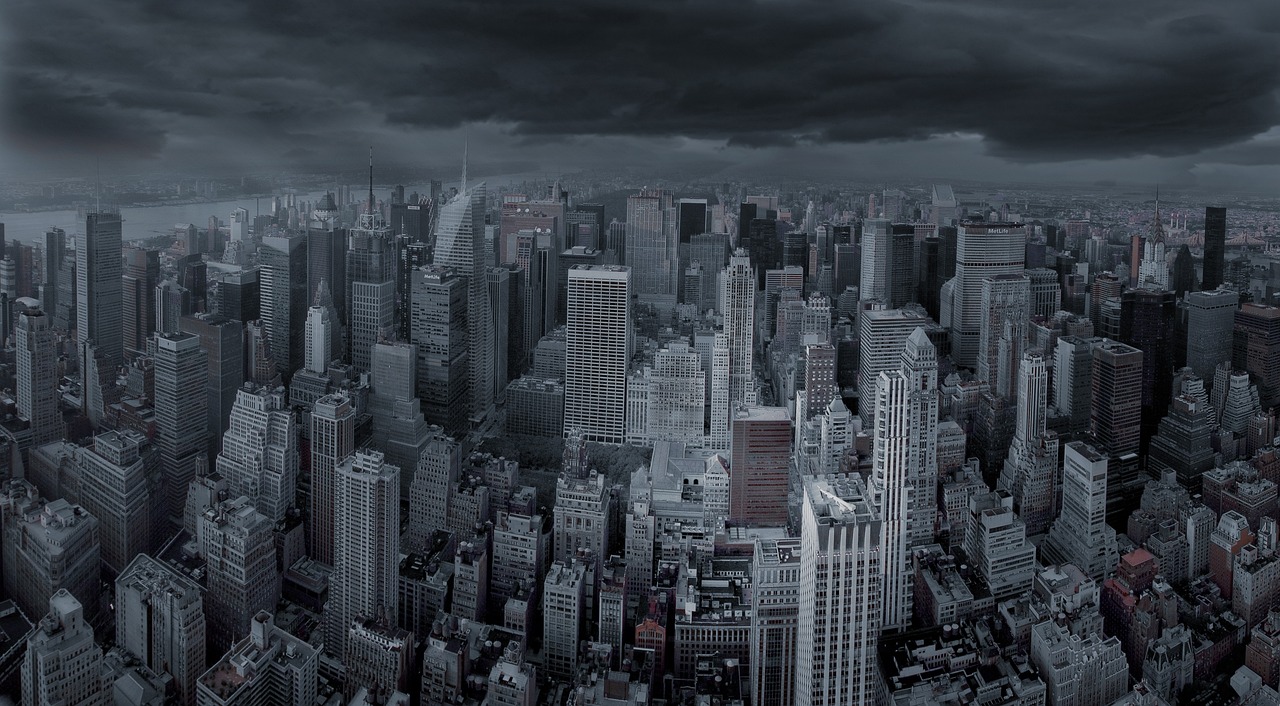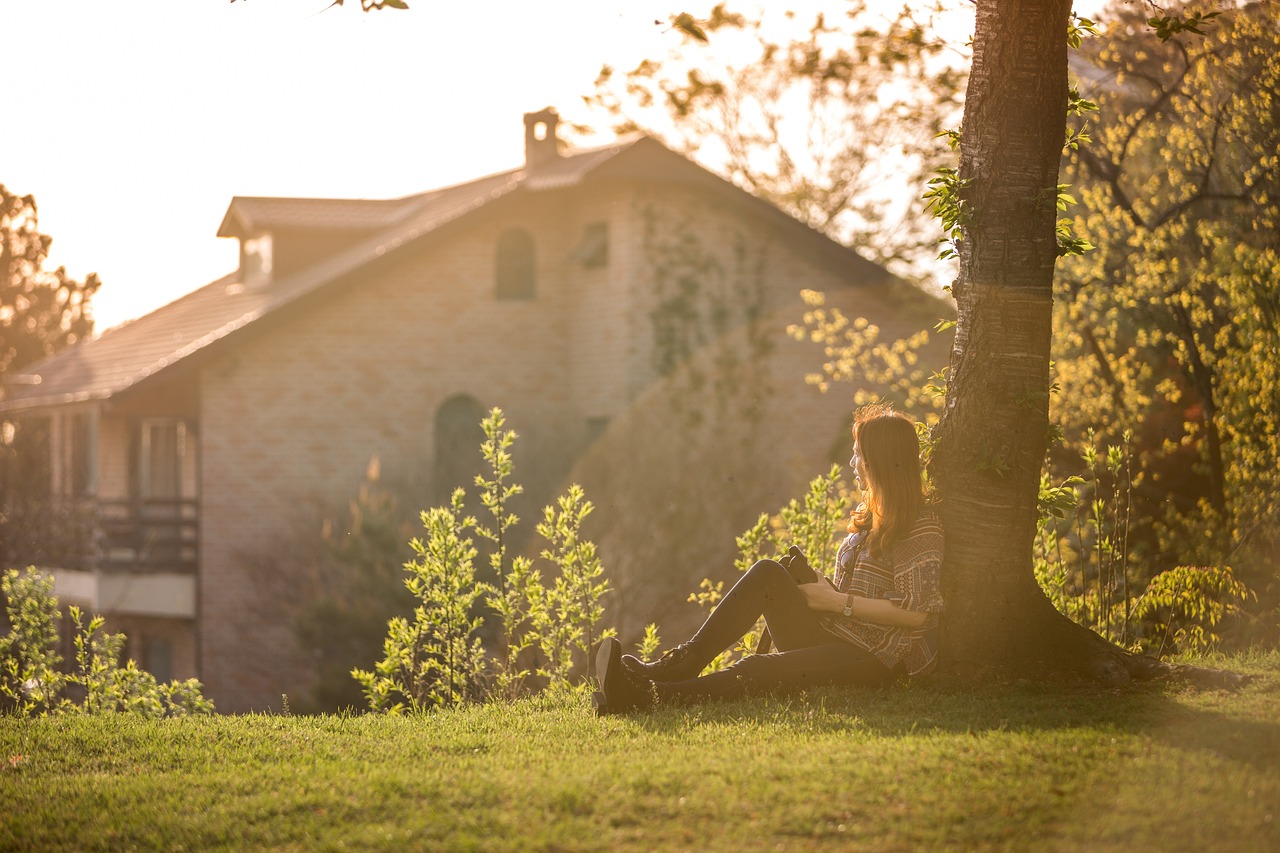Create Powerful Drama in Your Paintings
Are you ready to transform your paintings into captivating narratives that resonate with viewers on a profound level? Creating powerful drama in your artwork is not just about slapping on some vibrant colors or intricate details; it’s about weaving a story, evoking emotions, and capturing the essence of the human experience. Just like a well-written novel or an intense film, your paintings can draw people in, making them feel and think. In this article, we’ll dive into various techniques and concepts that will help you infuse your paintings with emotional intensity and narrative depth, enhancing their overall impact.
Imagine walking into a gallery and being immediately struck by a painting that seems to pulse with life. What grabs your attention? Is it the bold use of color, the dramatic interplay of light and shadow, or perhaps the story unfolding within the frame? Each element plays a vital role in crafting the drama of your artwork. By understanding and manipulating these components, you can create pieces that not only attract viewers but also leave them pondering long after they’ve walked away.
Throughout this journey, we’ll explore key aspects such as color dynamics, the use of light and shadow, composition, and the incorporation of narrative elements. Each section will provide you with practical tips and techniques that you can apply directly to your work. Whether you're a novice artist or a seasoned pro, there’s always something new to learn about enhancing the emotional depth of your paintings. So, grab your brushes, and let’s embark on this creative adventure together!
Color is more than just a visual element; it’s a powerful tool that can evoke emotions and set the mood in your artwork. Have you ever noticed how certain colors can make you feel happy, sad, or even anxious? This emotional response is something you can harness in your paintings. By using contrasting colors, you can create a sense of tension and drama that captivates viewers.
For example, consider the emotional impact of warm colors like reds and oranges versus cool colors like blues and greens. Warm colors often evoke feelings of passion and energy, while cool colors can convey calmness or sadness. By strategically placing these colors next to each other, you can create a dynamic interplay that draws the viewer’s eye and stirs their emotions.
Incorporating a color wheel into your creative process can help you understand how to mix and match colors effectively. Here’s a simple breakdown of color relationships:
| Color Type | Emotional Impact |
|---|---|
| Warm Colors | Excitement, Passion, Energy |
| Cool Colors | Calmness, Sadness, Serenity |
| Neutral Colors | Balance, Sophistication, Timelessness |
By mastering the dynamics of color, you can significantly enhance the drama within your paintings, making them not just visually appealing but also emotionally resonant.
Light and shadow are essential in creating depth and focus in your paintings. They can dramatically alter perceptions, guiding the viewer’s eye to specific areas of your artwork. Think of light as a spotlight on a stage, illuminating key elements while casting others into shadow. This technique can create a sense of mystery and intrigue, inviting viewers to explore the narrative within your piece.
One of the most powerful techniques for enhancing drama is chiaroscuro, the use of strong contrasts between light and dark. This method has been employed by master artists throughout history to create a sense of volume and three-dimensionality. For instance, Leonardo da Vinci and Caravaggio are renowned for their mastery of chiaroscuro, using it to evoke intense emotions and highlight dramatic moments in their works.
Effective use of light can also direct viewer attention. By strategically placing light sources in your composition, you can establish focal points that draw the eye. This not only enhances the visual interest of your painting but also allows you to control the narrative flow. Think of it as setting the stage for a theatrical performance, where the spotlight shines on the main character while the background fades into shadow.
Different lighting scenarios can evoke various atmospheres. For example, soft, diffused light can create a serene and peaceful ambiance, while harsh, directional light can generate tension and drama. Experimenting with both natural and artificial lighting can help you discover the emotional impact of your paintings. Don’t be afraid to play around with shadows and highlights; sometimes, the most unexpected combinations can lead to stunning results.
Composition is vital for drama. The way you arrange elements within your painting can create tension and movement, guiding the viewer’s eye through the narrative. Consider the rule of thirds, which suggests dividing your canvas into a grid and placing focal points along these lines or at their intersections. This technique can create a sense of balance while still allowing for dynamic tension.
Narrative elements can add layers of meaning to your paintings, engaging viewers on a deeper level. Think about the stories you want to tell through your art. Are you capturing a fleeting moment, a significant event, or an emotional experience? Incorporating storytelling within your paintings can evoke powerful emotional responses and encourage viewers to connect with the artwork on a personal level.
Characters can convey powerful emotions. By depicting human figures with expressive poses and facial expressions, you can enhance the narrative and emotional depth of your artwork. Consider how body language and facial expressions can communicate feelings like joy, sorrow, or tension. The more relatable your characters are, the more likely viewers will connect with your piece.
Symbolism can enrich meaning in your work. Incorporating symbols and metaphors adds complexity and intrigue, inviting viewers to interpret your painting in multiple ways. For instance, a stormy sky might symbolize turmoil, while a blooming flower could represent hope. By layering these elements, you create a richer narrative that resonates with your audience.
- How can I improve the emotional impact of my paintings? Experiment with color dynamics, light and shadow, and narrative elements to evoke deeper feelings.
- What is chiaroscuro, and how can I use it? Chiaroscuro is the use of strong contrasts between light and dark. You can use it to create depth and highlight key areas in your artwork.
- How important is composition in painting? Composition is crucial as it guides the viewer’s eye and creates tension and movement within your piece.

Understanding Color Dynamics
When it comes to creating powerful drama in your paintings, color dynamics are absolutely fundamental. Imagine walking into a room filled with vibrant reds and deep blues; instantly, you can feel a shift in mood. Color isn't just about aesthetics; it’s an emotional language that speaks volumes to the viewer. By skillfully manipulating color, you can evoke feelings ranging from joy to melancholy, tension to tranquility. So, how do you harness this power? Let’s dive into the world of color theory and explore how contrasting colors can enhance the emotional impact of your artwork.
First off, understanding color contrast is key. When you place colors opposite each other on the color wheel, you create a striking visual tension that draws the viewer's eye. For instance, pairing a bright yellow with a deep purple can create a sense of vibrancy and excitement. This is not just a random choice; it’s about creating a dialogue between colors that can influence the emotional tone of your painting. Think of it like a conversation where each color has something to say, and the contrast amplifies their voices.
Additionally, consider the temperature of colors. Warm colors like reds and oranges can evoke feelings of warmth and passion, while cool colors such as blues and greens can convey calmness or sadness. By mixing these temperatures, you can craft a nuanced emotional landscape. For example, a painting dominated by warm colors can feel inviting, but introducing cool colors can add an element of tension or conflict. This interplay can be likened to a dramatic plot twist in a story, keeping the viewer engaged and intrigued.
Moreover, the saturation of colors plays a significant role in drama. Highly saturated colors tend to grab attention and evoke strong emotions, while desaturated colors can create a more subdued and reflective mood. A painting filled with vibrant, saturated hues can feel alive and energetic, while one that uses softer, muted tones can evoke nostalgia or introspection. It’s all about finding the right balance to tell the story you want to convey.
To summarize, understanding color dynamics involves:
- Mastering color contrast for visual tension.
- Utilizing warm and cool colors to set emotional tones.
- Adjusting saturation to evoke different feelings.
By thoughtfully applying these principles, you can create artwork that resonates deeply with your audience, drawing them into the emotional core of your painting. Remember, each stroke of color is a brushstroke of emotion—use them wisely to create a captivating narrative.

Utilizing Light and Shadow
Light and shadow are the unsung heroes of the visual arts, capable of transforming a simple scene into a powerful narrative. Imagine stepping into a dimly lit room where a single beam of light illuminates a figure, casting deep shadows that dance across the walls. This interplay can evoke feelings of mystery, tension, or even serenity. By mastering the manipulation of light and shadow, artists can create a sense of depth and focus that draws viewers into their work, making them feel as if they are part of the story.
One of the most effective ways to utilize light and shadow is by understanding their dynamic relationship. Light can highlight certain elements of your painting, guiding the viewer's eye to where you want it most. Conversely, shadows can obscure details, creating a sense of intrigue. For instance, consider a painting of a bustling city street at dusk. The warm glow of streetlights can illuminate the faces of pedestrians, while the shadows cast by buildings create a stark contrast that heightens the drama of the scene.
To effectively implement light and shadow in your artwork, consider these key techniques:
- Value Contrast: Utilize a range of light and dark values to create a three-dimensional effect. The greater the contrast, the more dramatic the impact.
- Soft vs. Hard Shadows: Experiment with different types of shadows. Soft shadows can create a sense of calm, while hard shadows can evoke tension.
- Directional Lighting: Consider the source of light in your painting. Is it natural sunlight, or an artificial light source? The direction can dramatically change the mood.
Another fascinating aspect of light and shadow is the chiaroscuro technique, which translates to "light-dark" in Italian. This method involves using strong contrasts between light and dark to give the illusion of volume in modeling three-dimensional objects and figures. Historically, artists like Caravaggio and Rembrandt mastered this technique, using it to convey emotional depth and drama in their works. By studying their techniques, you can learn how to apply chiaroscuro to your own paintings, enhancing the emotional resonance of your subjects.
Effective use of light can also help establish focal points in your artwork. By strategically placing light on key elements, you can direct the viewer's attention exactly where you want it. For example, in a portrait, illuminating the subject's face while allowing the background to fade into shadow can create a striking visual hierarchy. This not only emphasizes the character's expression but also enhances the overall narrative of the piece. Think of it as spotlighting a performer on stage; the audience's attention is naturally drawn to the illuminated figure, creating a moment of connection.
Different lighting scenarios can evoke various atmospheres in your artwork. For instance, consider the difference between a bright sunny day and a moody, overcast afternoon. Each scenario can tell a different story and elicit different emotions. Here are a few scenarios to consider:
- Natural Lighting: Use the soft, warm light of sunrise or the cool, blue tones of twilight to set the mood.
- Artificial Lighting: Explore the stark contrasts created by neon lights or the warm glow of a lamp to create a sense of intimacy or chaos.
- Backlighting: This technique can create silhouettes, adding a dramatic flair and emphasizing shapes over details.
Incorporating these elements into your paintings can heighten their emotional impact, making your artwork not just a visual experience, but an emotional journey. By thoughtfully manipulating light and shadow, you can create a narrative that resonates with viewers, inviting them to explore the depths of your artistic vision.
Q: How can I practice using light and shadow in my paintings?
A: Start by observing how light interacts with objects in your environment. Experiment with different light sources and try to replicate those effects in your artwork.
Q: What materials are best for experimenting with chiaroscuro?
A: Charcoal and graphite are excellent for practicing chiaroscuro because they allow for a wide range of values and easy blending.
Q: Can I use digital tools to manipulate light and shadow?
A: Absolutely! Digital painting software often has features that allow you to experiment with light and shadow easily, making it a great tool for learning.

Chiaroscuro Techniques
Chiaroscuro, derived from the Italian words for "light" (chiaro) and "dark" (scuro), is a technique that can transform your paintings into compelling narratives filled with emotional weight. Imagine standing before a painting where the light dances across the canvas, revealing intricate details while shadows lurk in the corners, creating an air of mystery. This powerful contrast not only enhances the visual appeal but also evokes a visceral response from the viewer. When applied effectively, chiaroscuro can guide the audience's eye and amplify the drama within your artwork.
Historically, artists like Caravaggio and Rembrandt mastered this technique, using it to convey deep emotion and psychological complexity. Caravaggio, for instance, often employed chiaroscuro to create a theatrical effect, drawing attention to the faces of his subjects, while allowing the background to fade into darkness. This method creates a spotlight effect, making the viewer feel as if they are witnessing a moment frozen in time. By studying these masters, you can learn to manipulate light and shadow in your own work to achieve similar emotional intensity.
To effectively incorporate chiaroscuro in your paintings, consider the following techniques:
- Establish a Light Source: Start by determining where your light source will come from. This could be natural light from a window or an artificial light source. The direction of the light will dictate how shadows fall and where highlights appear.
- Use a Limited Palette: Limiting your color palette can help emphasize the contrast between light and dark. Consider using shades of gray or earth tones to create a more dramatic effect.
- Layer Your Paint: Build up layers of paint to create depth. Start with darker tones and gradually add lighter colors to create highlights. This technique adds dimension and makes your subject pop off the canvas.
In addition to these techniques, understanding the emotional implications of light and shadow can greatly enhance your artwork. For example, harsh, direct light can create a sense of tension or urgency, while soft, diffused light can evoke calmness and serenity. By choosing the right lighting scenario, you can guide the emotional response of your viewers, making them feel a part of the narrative you are portraying.
As you experiment with chiaroscuro, don't forget to consider the composition of your painting. The placement of light and shadow can create a sense of movement or stillness, directing the viewer's gaze through the artwork. For instance, a well-placed highlight can draw attention to a character's expression, while a shadow can add intrigue and complexity to the scene. The interplay between light and dark not only enhances the aesthetic quality of your painting but also deepens the narrative, inviting viewers to explore the story behind the image.
In conclusion, mastering chiaroscuro techniques can significantly elevate the emotional impact of your paintings. By understanding how to manipulate light and shadow, you can create dramatic, engaging works of art that resonate with your audience on a deeper level. So, grab your brushes, choose your light source wisely, and let the interplay of light and dark guide you on your artistic journey!
Q: What is chiaroscuro?
A: Chiaroscuro is a technique that uses strong contrasts between light and dark to create a sense of volume and depth in painting.
Q: How can I start using chiaroscuro in my paintings?
A: Begin by establishing a clear light source and practicing with a limited color palette to enhance the contrasts in your work.
Q: Are there modern artists who use chiaroscuro techniques?
A: Yes, many contemporary artists utilize chiaroscuro to add drama and emotion to their works, drawing inspiration from historical masters.

Creating Focal Points
When it comes to creating powerful drama in your paintings, establishing focal points is absolutely essential. A focal point acts as the heart of your artwork, drawing the viewer's eye and guiding their emotional response. Think of it as the main character in a story; without a strong protagonist, the narrative falls flat. So, how do you create these captivating focal points? Let's delve into some techniques that can elevate your artwork to new heights.
First and foremost, consider the use of contrast. Just like a spotlight on a stage highlights the lead actor, contrasting colors and values can make your focal point pop. For example, if your painting is predominantly made up of cool colors, introducing a warm color at the focal point can create an immediate visual impact. This technique not only captures attention but also evokes emotional responses. Imagine a serene blue landscape with a fiery red sunset; the contrast creates a tension that can make the viewer feel a sense of awe or longing.
Another effective strategy is to manipulate composition. The arrangement of elements within your painting can significantly influence where the viewer's gaze lands. You can use the rule of thirds to position your focal point off-center, creating a sense of movement and tension. This technique invites the viewer to explore the entire composition rather than just fixating on one area. Additionally, leading lines—such as roads, rivers, or even the direction of figures' gazes—can guide the viewer's eye directly to your focal point.
Lighting also plays a pivotal role in establishing focal points. By using dramatic lighting, you can create a sense of depth and highlight specific areas of your painting. For example, consider a scene where a figure stands under a single beam of light in a darkened room. The stark contrast between light and shadow not only emphasizes the figure but also adds a layer of mystery and intrigue to the narrative. This technique, often seen in chiaroscuro paintings, can evoke strong emotional reactions from the audience.
Finally, don't underestimate the power of emotional resonance. A focal point that conveys a strong emotion can resonate deeply with viewers. Whether it's the joy of a child playing, the sorrow of a lost love, or the tension of a standoff, tapping into universal feelings can create a connection that keeps viewers engaged. To enhance this emotional impact, consider incorporating elements like facial expressions, body language, and even color palettes that reflect the mood you want to convey.
In summary, creating focal points in your paintings is about more than just making something stand out; it's about telling a story and evoking emotions. By combining contrast, composition, lighting, and emotional resonance, you can craft focal points that not only attract attention but also leave a lasting impression on your audience. So grab your brushes and start experimenting—your next masterpiece awaits!
- What is a focal point in painting? A focal point is the area in a painting that draws the viewer's attention and serves as the main subject of the artwork.
- How can I create a focal point? You can create a focal point by using contrast, strategic composition, dramatic lighting, and emotional content.
- Can a painting have more than one focal point? Yes, but be cautious as multiple focal points can distract the viewer. It's often best to have one primary focal point and secondary elements that support it.
- What is the rule of thirds? The rule of thirds is a compositional guideline that suggests dividing your canvas into thirds, both horizontally and vertically, to position focal points at the intersections.

Dramatic Lighting Scenarios
When it comes to painting, the way you use light can be the difference between a flat, lifeless image and a dynamic, emotionally charged masterpiece. Think of light as the actor in your painting, playing a crucial role in setting the stage and mood. Just as a director uses lighting to create suspense or drama in a film, you can manipulate light in your artwork to evoke powerful feelings and reactions from your audience. So, how do you achieve these dramatic effects?
One effective method is to experiment with natural lighting. Imagine a sunset casting warm, golden hues across a landscape; the colors not only enhance the beauty of the scene but also evoke a sense of calm and nostalgia. On the flip side, consider a stormy sky where harsh, gray light creates an atmosphere of tension and unease. By choosing the right time of day and weather conditions, you can influence the emotional tone of your painting significantly.
Another approach is to use artificial lighting. This can be particularly effective in still life or portrait paintings. A single spotlight can create dramatic shadows, highlighting certain features while leaving others in darkness, inviting the viewer to explore the hidden depths of your subject. Think of how stage lighting can transform an ordinary scene into something extraordinary. You can employ techniques such as backlighting, which creates an ethereal glow around your subject, or side lighting, which emphasizes texture and form.
To illustrate the impact of different lighting scenarios, consider the following table that outlines various lighting types and their emotional effects:
| Lighting Type | Emotional Effect |
|---|---|
| Soft Natural Light | Warmth, Comfort, Serenity |
| Harsh Direct Light | Tension, Conflict, Drama |
| Backlighting | Mystery, Intrigue, Ethereal Quality |
| Low Key Lighting | Suspense, Fear, Intensity |
| High Key Lighting | Joy, Lightness, Whimsy |
Incorporating these lighting scenarios into your paintings can transform not only the visual appeal but also the emotional resonance of your work. So, the next time you pick up your brush, consider how you can play with light to tell a story. Whether you want to evoke joy, sadness, or tension, the lighting you choose can be a powerful tool in your artistic arsenal.
- What is the best time of day for natural lighting in paintings? The golden hour, shortly after sunrise or before sunset, provides soft, warm light that enhances colors and textures.
- How can I practice using dramatic lighting in my artwork? Start by creating simple still lifes with different light sources and observe how shadows and highlights change the mood.
- Can I use digital tools to experiment with lighting? Absolutely! Software like Photoshop allows you to manipulate light and shadow digitally before applying it to your traditional painting.

Composition and Framing
When it comes to creating powerful drama in your paintings, composition and framing are the unsung heroes. Think of them as the backbone of your artwork, providing structure and guiding the viewer's eye through the narrative you wish to convey. Just like a well-written story needs a strong plot, your painting requires a thoughtful arrangement of elements to evoke emotion and tension. The way you position your subjects, the lines you draw, and even the spaces you leave empty can dramatically alter the impact of your piece.
One of the key aspects of composition is the concept of the rule of thirds. Imagine dividing your canvas into a grid of nine equal parts, creating a tic-tac-toe board. By placing your focal points along these lines or at their intersections, you can create a sense of balance and tension that draws the viewer in. This technique not only enhances the visual appeal but also allows for a natural flow of the viewer's gaze, making your painting more engaging. However, rules are made to be broken, and sometimes, placing your subject off-center can create a more dynamic and interesting composition.
Another important aspect is the use of leading lines. These are lines within your painting that guide the viewer's eye towards the focal point. They can be actual lines, like roads or rivers, or implied lines created by the arrangement of objects. For example, if you're painting a landscape, the path leading into the distance can create a sense of depth and invite the viewer to explore further. This technique not only adds interest but also enhances the narrative, making the viewer feel like they are part of the scene.
Furthermore, consider the framing of your subjects. This can be achieved by using natural elements within the scene to create a 'frame' around your focal point. Think of branches arching over a figure or a doorway leading into a room. This technique not only draws attention but also adds a sense of context and depth to your painting. It’s a bit like taking a photograph; the right frame can transform an ordinary image into something extraordinary.
Finally, the use of negative space is a powerful tool in composition. This refers to the space around and between the subjects of your painting. A well-balanced negative space can enhance the overall composition, allowing your subject to breathe and stand out. It can create a sense of isolation or emphasize the drama of the scene. For instance, a solitary figure in a vast landscape can evoke feelings of loneliness or contemplation.
In summary, mastering composition and framing is essential for any artist looking to create drama in their paintings. By utilizing techniques such as the rule of thirds, leading lines, and framing your subjects effectively, you can enhance the emotional depth of your artwork. Remember, every brushstroke and placement matters; they all contribute to the story you want to tell.
- What is the rule of thirds? The rule of thirds is a composition technique where you divide your canvas into a grid of nine equal parts and place focal points along the lines or intersections to create balance.
- How can I use leading lines in my paintings? Leading lines are elements in your painting that guide the viewer's eye toward the focal point, enhancing depth and interest.
- What is negative space, and why is it important? Negative space is the area around and between your subjects. It helps to create balance and emphasizes the main elements of your painting.
- Can I break the rules of composition? Absolutely! While rules like the rule of thirds can be helpful, breaking them can lead to unique and compelling compositions.

Incorporating Narrative Elements
When it comes to painting, the ability to tell a story can transform a simple image into a captivating narrative that resonates with viewers. Incorporating narrative elements into your artwork not only adds depth but also invites the audience to engage on a more emotional level. Imagine walking through a gallery and coming across a painting that draws you in, making you wonder about the characters, their backgrounds, and the emotions they are experiencing. That's the power of storytelling in art!
To effectively weave narratives into your paintings, consider the following techniques:
- Character Development: Just like in a novel, the characters in your painting can convey a multitude of emotions. Whether it's a solitary figure lost in thought or a group engaged in a dynamic interaction, the way you depict these figures can evoke a strong emotional response. Pay attention to their expressions, body language, and even their clothing, as these elements can tell a story of their own.
- Setting the Scene: The background and environment play a crucial role in establishing context. A bustling market scene can evoke feelings of joy and vibrancy, while a desolate landscape might convey loneliness and despair. Use your surroundings to enhance the narrative and give your characters a place to inhabit.
- Emotional Context: Colors, lighting, and composition can all contribute to the emotional tone of your painting. For example, using warm tones and soft lighting can create a sense of comfort, while harsh shadows and cooler colors might evoke tension or sadness. Consider how these elements can enhance the story you want to tell.
Moreover, incorporating symbolism and metaphor can add layers of meaning to your narrative. Perhaps a wilting flower in the foreground symbolizes lost love, or a distant storm represents impending conflict. These symbols can enrich the viewer's experience, inviting them to delve deeper into the story behind the artwork.
Another powerful way to enhance your narrative is through the use of juxtaposition. By placing contrasting elements side by side—such as light and dark, joy and sorrow—you can create a tension that compels the viewer to explore the relationship between these elements. Think of it as setting up a dialogue within your painting, where each element speaks to the other, enhancing the overall narrative.
Finally, don't underestimate the power of subtlety. Sometimes, leaving certain aspects open to interpretation can engage viewers even more. Instead of spelling everything out, allow them to fill in the gaps with their imagination. This not only makes your painting more intriguing but also encourages a personal connection with the audience.
Q1: How can I ensure my characters convey emotion effectively?
A1: Focus on facial expressions and body language. Study real-life emotions and try to replicate them in your figures. Small details, like the tilt of a head or the position of hands, can make a significant difference.
Q2: What role does color play in storytelling?
A2: Color can set the mood and tone of your painting. Warm colors often evoke feelings of happiness and warmth, while cool colors can create a sense of calm or sadness. Use color strategically to reflect the emotions you want to convey.
Q3: How can I incorporate symbolism without overwhelming the viewer?
A3: Choose symbols that are meaningful to your narrative and integrate them subtly. They should enhance the story rather than distract from it. Consider using a few key symbols that resonate deeply with the overall theme of your painting.

Character and Emotion
When it comes to painting, the characters you choose to depict can make or break the emotional resonance of your artwork. Think of your canvas as a stage, where every figure tells a story and every brushstroke adds to the narrative. The way you portray emotion in these characters can create a powerful connection with the viewer, drawing them into the world you've created. Have you ever looked at a painting and felt an instant emotional reaction? That’s the magic of character and emotion in art!
To effectively convey emotion through your characters, consider the following techniques:
- Facial Expressions: The face is a window to the soul. Subtle changes in the curvature of a mouth or the direction of a gaze can communicate a wide range of feelings, from joy to despair.
- Body Language: Posture and movement can express emotions just as powerfully as facial expressions. A slumped figure may suggest defeat, while an upright stance may convey confidence or triumph.
- Color Choices: The colors you use to depict your characters can evoke specific emotions. For instance, warm colors like red and orange can suggest passion or anger, while cool colors like blue and green can evoke calmness or sadness.
Imagine a painting featuring a solitary figure standing on a cliff, gazing out at a stormy sea. The character's body language—arms crossed tightly, head bowed—tells a story of vulnerability and reflection. The dark, tumultuous colors of the ocean contrast sharply with the pale figure, emphasizing their isolation. Such compositions invite viewers to not just observe, but to feel the weight of the character's emotions.
Moreover, incorporating human experiences into your characters can deepen the emotional impact. Think about the stories behind the faces you paint. Each character can represent a different aspect of the human experience—love, loss, hope, or fear. By embedding these narratives into your artwork, you create a multi-layered experience that resonates with viewers on a personal level.
For instance, consider the famous painting "The Scream" by Edvard Munch. The character depicted is not just a figure in a landscape; they embody existential dread and anxiety that many people can relate to. This emotional depth is what makes the painting timeless and universally impactful.
In conclusion, the way you depict character and emotion in your paintings can significantly enhance their narrative depth and emotional intensity. By paying close attention to facial expressions, body language, and the stories behind your characters, you can create artwork that not only captures the eye but also touches the heart. So, the next time you pick up your brush, ask yourself: what story do I want to tell, and how can my characters convey that emotion?
Q: How can I improve the emotional impact of my characters in paintings?
A: Focus on the details of facial expressions and body language. Use color strategically to evoke the desired emotions and consider the narratives behind your characters.
Q: Is it important to have a story behind each character?
A: Yes! A story adds depth and meaning to your characters, making them more relatable and engaging for viewers.
Q: Can I use abstract characters to convey emotion?
A: Absolutely! Abstract forms can also evoke feelings; it’s all about how you use color, shape, and composition to express emotion.

Symbolism and Metaphor
When it comes to adding layers of meaning to your paintings, are your best friends. They act like the secret sauce that transforms a simple visual into a profound statement. Imagine looking at a painting of a wilting flower. At first glance, it may seem like just a pretty image, but delve a little deeper, and you might uncover themes of fragility or the passage of time. This is where symbolism comes into play, giving your artwork a voice that resonates with viewers on a personal level.
To effectively incorporate symbolism, think about the objects you choose to include in your paintings. Each element can serve as a symbol, conveying a specific idea or emotion. For instance, a broken chain might symbolize freedom from oppression, while a stormy sea could represent turmoil or conflict. The beauty of using symbols is that they can be universally understood, yet their interpretation can vary from person to person, adding a layer of intrigue to your work.
Now, let’s talk about metaphor. This is where things get even more interesting. A metaphor takes a concept and compares it to something else, creating a bridge between two seemingly unrelated ideas. For example, painting a bird trapped in a cage can serve as a metaphor for feeling confined or restricted in life. By using metaphors, you invite viewers to engage with your work on a deeper level, encouraging them to explore their own interpretations and emotional responses.
Here are some tips for effectively using symbolism and metaphor in your paintings:
- Choose your symbols wisely: Ensure that the symbols you use align with the message you want to convey.
- Layer your meanings: Don’t be afraid to include multiple symbols that can be interpreted in various ways, adding depth to your work.
- Consider cultural context: Be aware that symbols can have different meanings in different cultures; this can either enhance or complicate your narrative.
- Test your ideas: Share your work with friends or fellow artists and ask them what they see. Their interpretations can provide valuable insights.
Incorporating symbolism and metaphor into your paintings not only enriches the visual experience but also invites viewers to ponder the deeper meanings behind your work. It’s like opening a door to a world of emotions and thoughts that might not be immediately visible, but are certainly felt. So, the next time you pick up your brush, consider what symbols and metaphors you can weave into your canvas. Your art can become a powerful medium for communication, sparking conversations and evoking emotions that linger long after the viewer has left.
Q: How do I choose the right symbols for my paintings?
A: Start by identifying the themes or emotions you want to convey. Research common symbols associated with those themes and see which resonate with you personally.
Q: Can I use multiple symbols in one painting?
A: Absolutely! Using multiple symbols can add layers of meaning, but be careful not to overcrowd the painting. Each symbol should contribute to the overall message.
Q: How can I ensure my symbols are understood by viewers?
A: While symbols can be interpreted in various ways, providing context through your title or artist statement can help guide viewers toward your intended meaning.
Q: Is it okay if viewers interpret my symbols differently than I intended?
A: Yes! Art is subjective, and personal interpretations can lead to rich discussions and deeper connections with your work.
Frequently Asked Questions
- What is the importance of color in creating drama in paintings?
Color is like the heartbeat of your artwork; it sets the emotional tone and can evoke a spectrum of feelings. By using contrasting colors, you can create tension and drama, drawing viewers into the narrative of your painting. Think of it as the mood lighting in a film—without it, the story just doesn’t resonate!
- How can light and shadow enhance my paintings?
Light and shadow are your best friends when it comes to adding depth and focus. By manipulating these elements, you can create a three-dimensional effect that pulls the viewer in. It’s like casting a spell—suddenly, your flat canvas transforms into a vibrant scene bursting with life!
- What are chiaroscuro techniques and how can I use them?
Chiaroscuro is the dramatic interplay of light and dark, a technique that can elevate your work from ordinary to extraordinary. By mastering this method, you can create striking contrasts that highlight the emotional intensity of your subjects. It’s akin to using a spotlight on a stage—everything else fades into the background, leaving your main character in the limelight!
- How do I create focal points in my artwork?
Establishing focal points is all about directing the viewer’s gaze. You can use light, color, or composition to guide attention to the most important parts of your painting. Imagine it as a treasure map—where do you want your audience to explore first?
- What types of lighting scenarios can I use for dramatic effect?
Different lighting scenarios can evoke various moods. Natural light can create a serene atmosphere, while artificial light can add intensity and drama. Experimenting with these scenarios is like playing with emotions; each choice can lead to an entirely different narrative!
- How can I incorporate narrative elements into my paintings?
Narrative elements add depth and invite viewers to engage with your artwork on a personal level. By weaving storytelling into your pieces, you can evoke deeper emotional responses. Consider each painting as a chapter in a book—what story do you want to tell?
- What techniques can I use to depict characters and emotions effectively?
Depicting characters with strong emotional expressions can significantly enhance the narrative of your painting. Focus on body language, facial expressions, and even the colors used to convey feelings. Think of it as capturing a moment in time—how can you express that emotion so the viewer feels it too?
- How can symbolism and metaphor enrich my artwork?
Incorporating symbols and metaphors can add layers of meaning to your paintings. They invite viewers to interpret and engage with your work on a deeper level. It’s like adding a secret ingredient to your favorite recipe—suddenly, it’s not just a meal; it’s an experience!



















